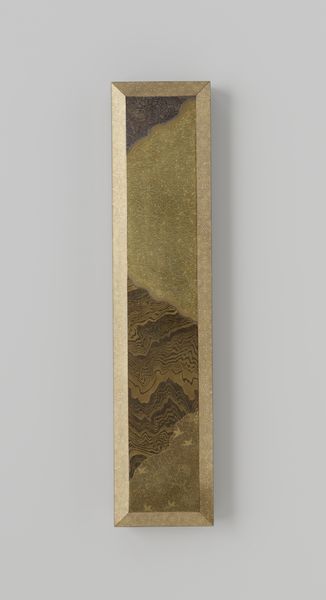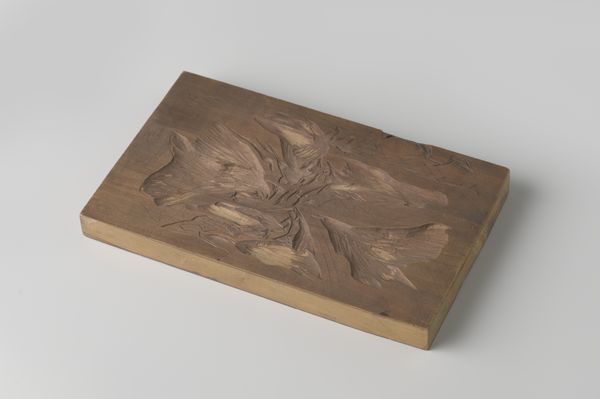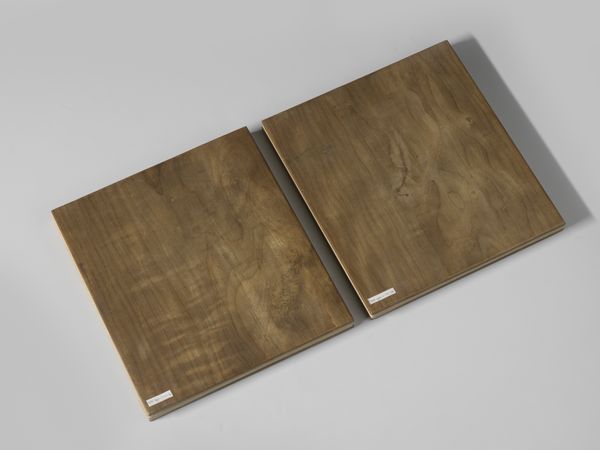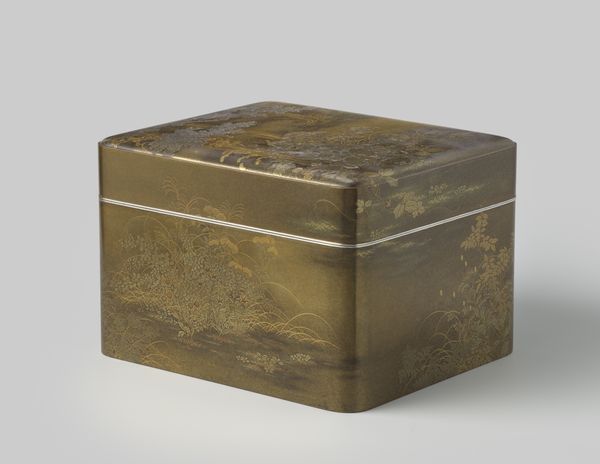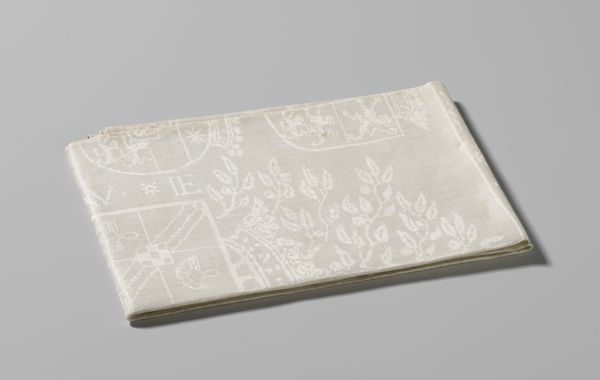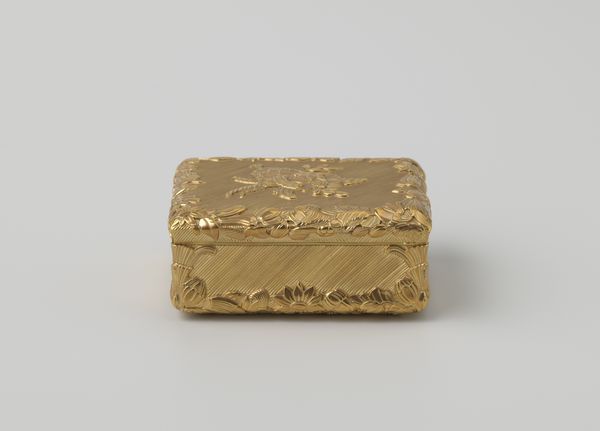
Set of writing box and box for poetry paper with patterened paper c. 1910 - 1925
0:00
0:00
#
asian-art
#
geometric
#
decorative-art
Dimensions: height 11.4 cm, width 38.7 cm, depth 44.9 cm
Copyright: Rijks Museum: Open Domain
Curator: This striking set, dating from around 1910 to 1925, comprises a writing box and a box specifically designed for poetry paper. It's attributed to Kamisaka Yukichi. Editor: Immediately, I see restraint and elegance. The colour palette is limited, the forms are precise, and the overall effect is incredibly refined. Curator: Absolutely. The decorative arts movement in Japan, particularly during the Meiji and Taisho periods, saw a real flourishing of artistry focused on elevating everyday objects, infusing them with beauty and meaning accessible to broader audiences, challenging hierarchies between fine and decorative arts, where items once deemed purely functional are rightfully understood as meaningful aesthetic gestures. Editor: Looking at it, those shimmering golden shapes set against the darker ground certainly evoke the idea of clouds or swirling mists – traditional symbols often used in East Asian art to convey a sense of the ephemeral and the profound, linking the practical function of storing writing materials to deeper philosophical ideas about language. It brings to mind calligraphic works and the weight of meaning. Curator: Considering the cultural context in which this set was created is so critical, specifically thinking about access and production of these materials, particularly poetry paper. Writing, artistic creation, and decorative arts became tools to solidify and reflect elite social identity and status, influencing everything from gender roles to class structure. Editor: The geometric precision also speaks volumes. The rigid box shapes are juxtaposed with these very fluid, almost organic patterns on the surface. Perhaps it reflects a desire to impose order and structure on something as inherently free-flowing as thought and expression, with the art form contained, almost protected, by the medium itself. I'm drawn to that tension. Curator: Indeed. This tension embodies complex intersections between form, function, and social status during that time, demanding close examination of gender dynamics, class differences, and political ideologies present within its designs and application of the materials themselves. Editor: Seeing this pairing—a set— also speaks of interconnectedness. These objects exist together, which enriches how we understand not just their materiality, but also how deeply ingrained our expressive activities are within culture. Curator: Precisely. By recognizing historical and social structures that have always shaped our visual experiences, we're more equipped to evaluate the enduring resonance this piece carries today. Editor: I leave with a reinforced awareness of how cultural touchstones continue echoing through this writing box and box for poetry paper.
Comments
No comments
Be the first to comment and join the conversation on the ultimate creative platform.



